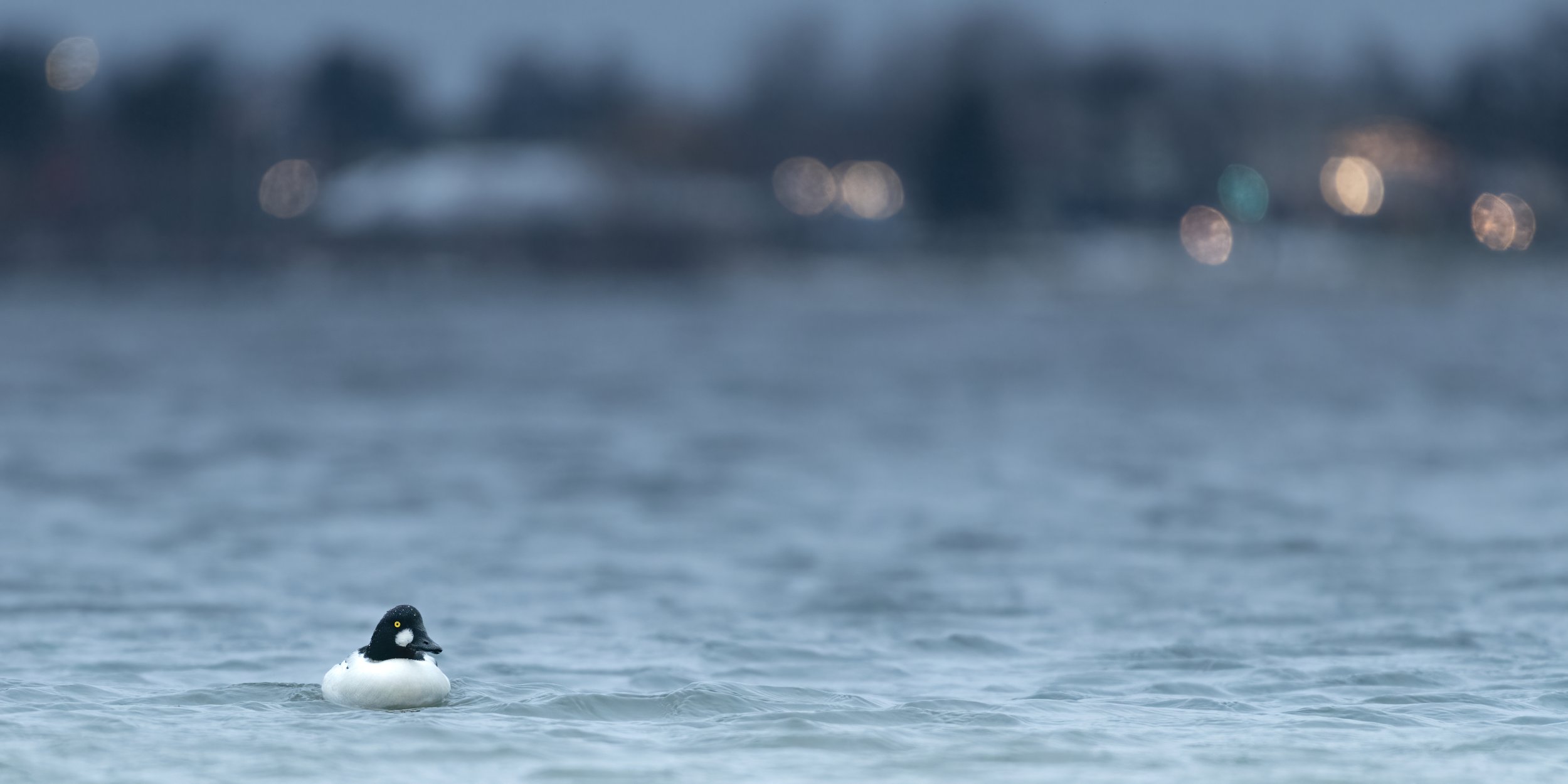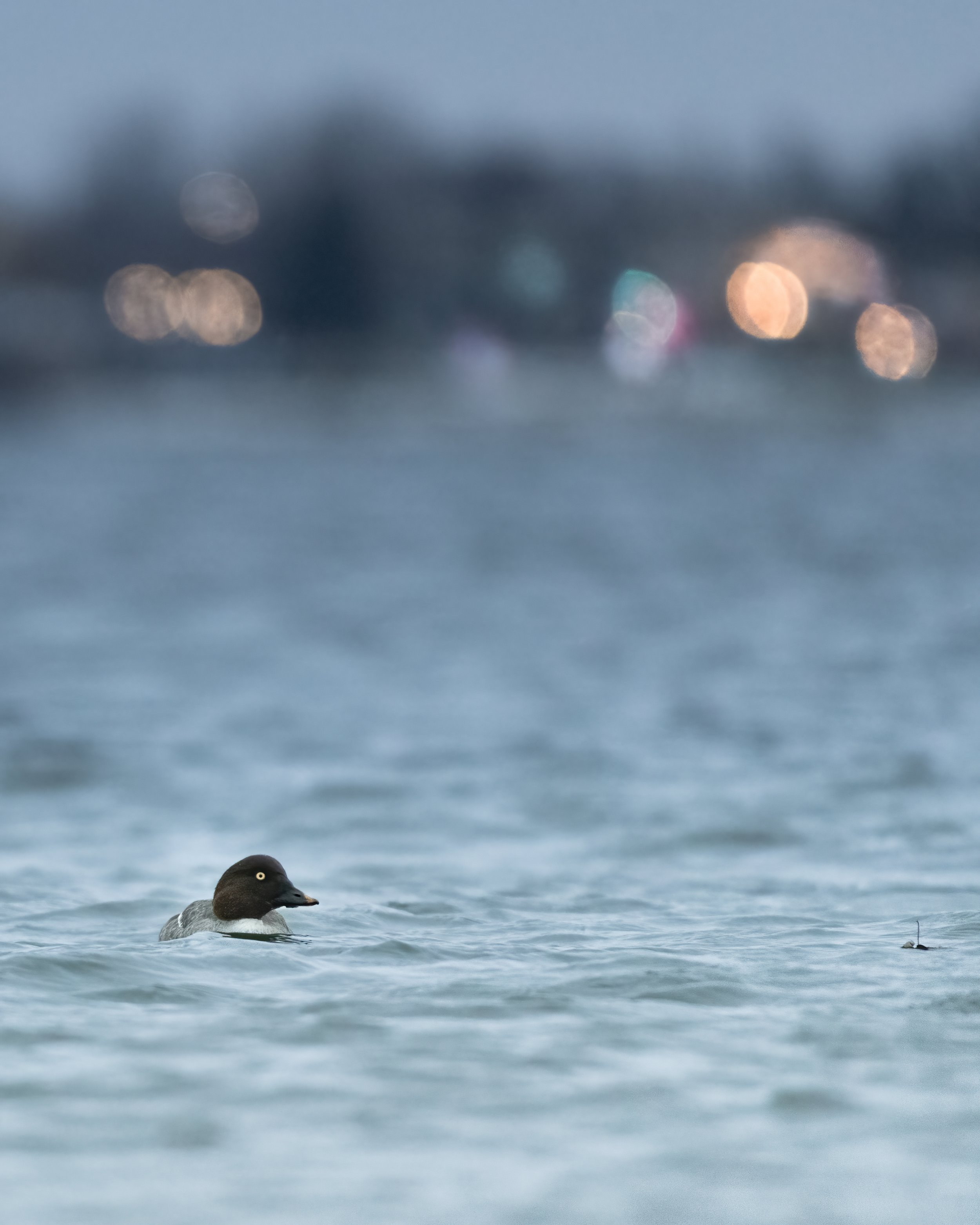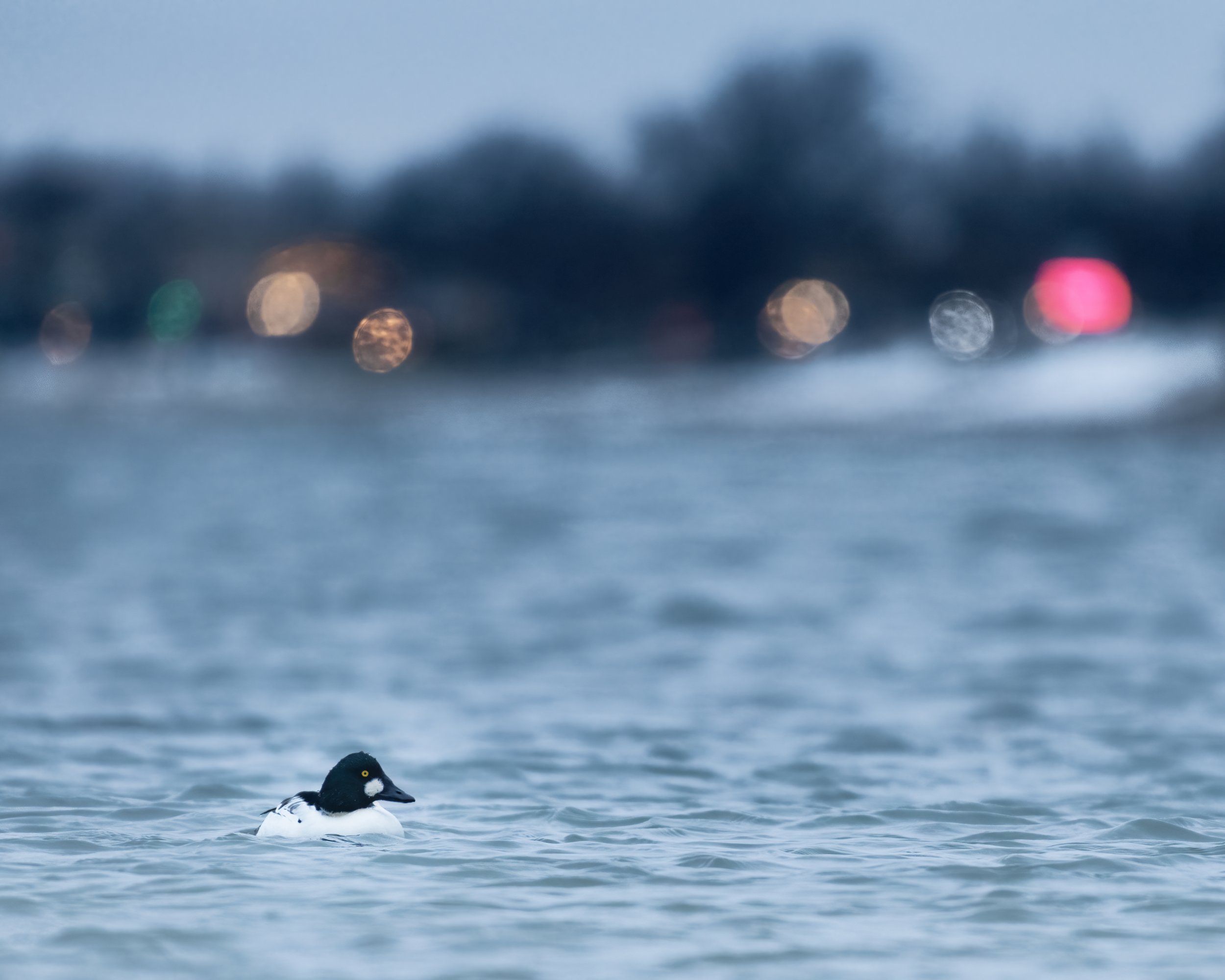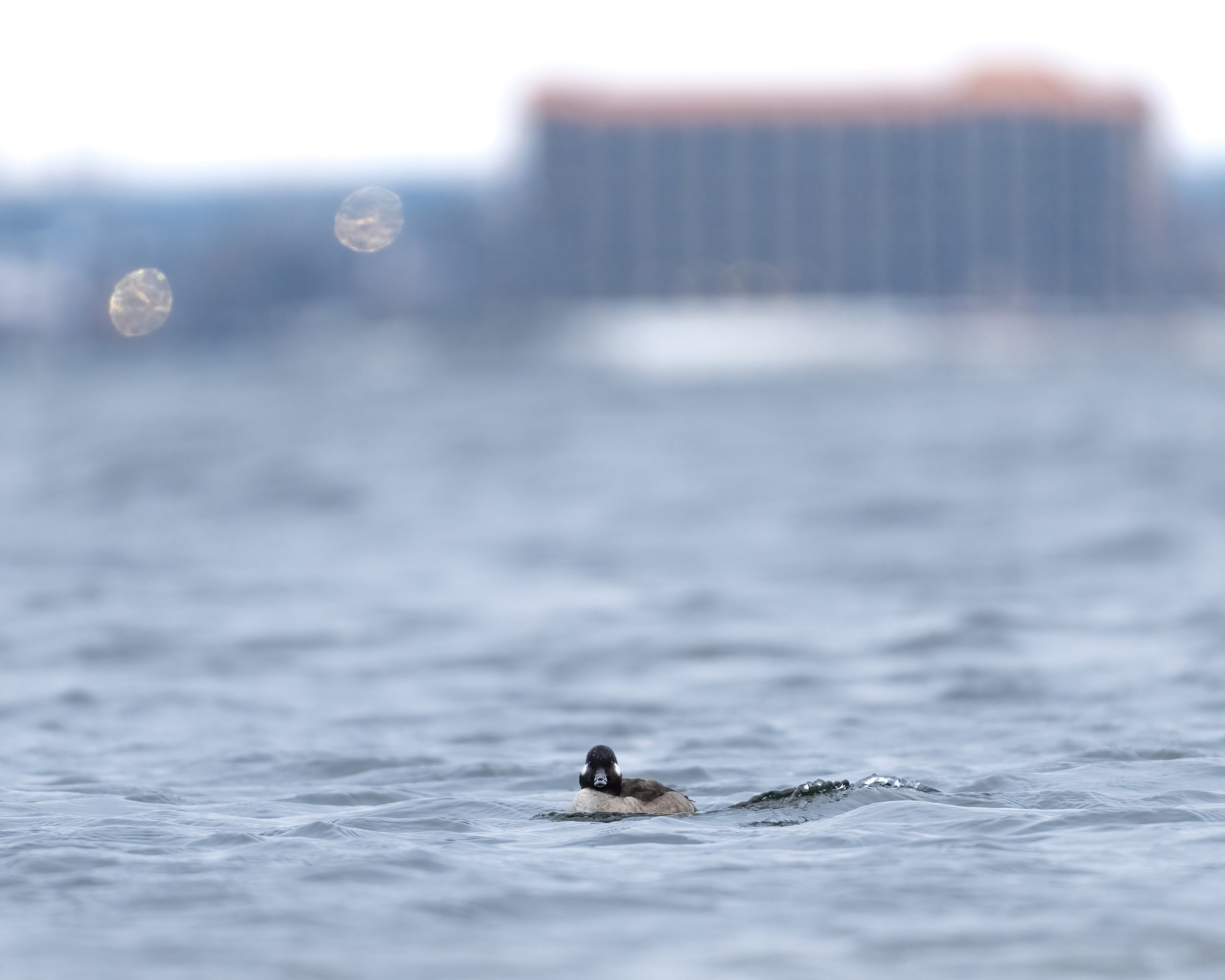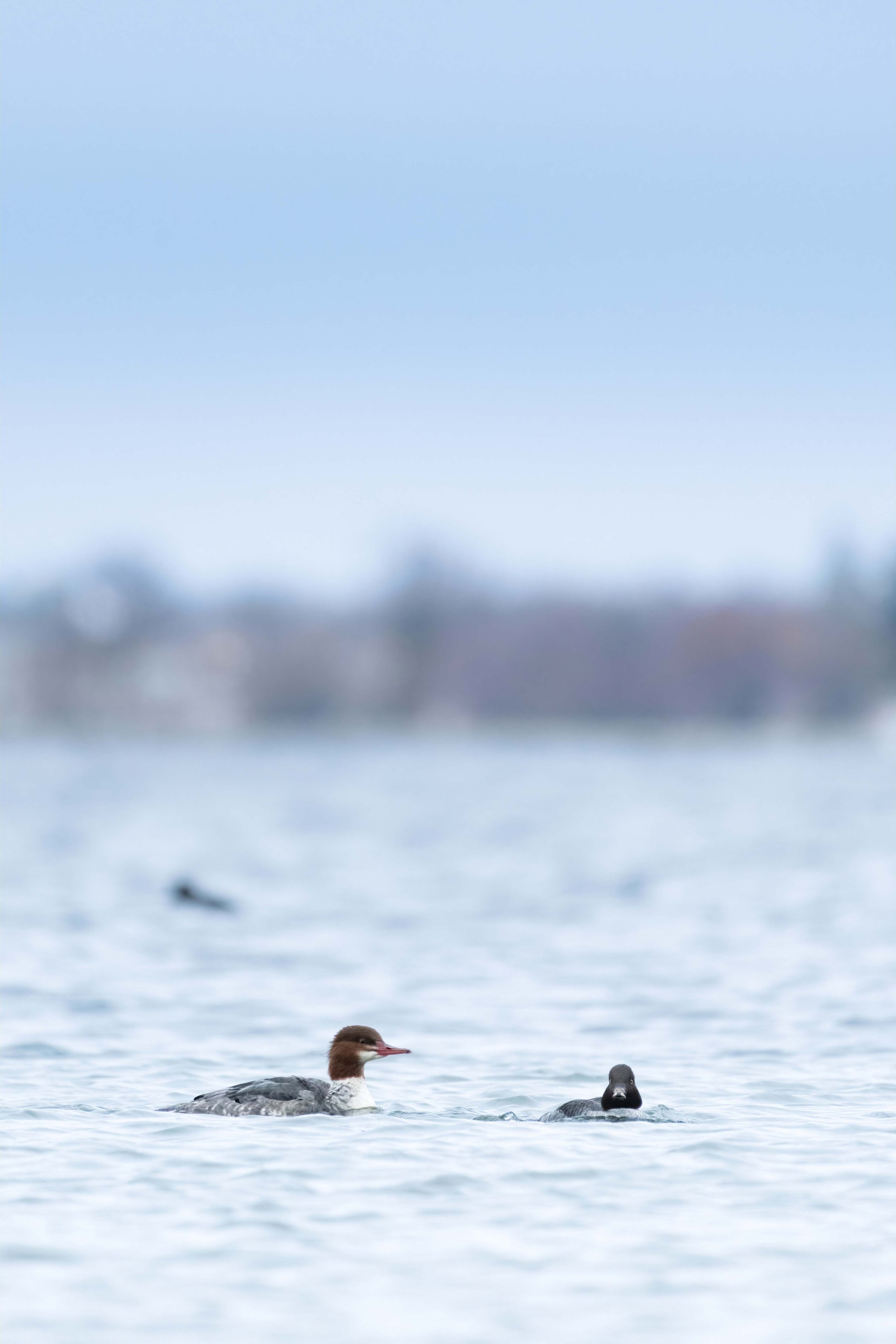Late November Waterfowl
Checking the weather conditions the night before is always important for a planned shot. The weather channel was calling for winds gusting anywhere from 20-35 mph straight out of the north. Perfect. This wind would allow me to make a pretty good guess as to where these birds would be landing, which makes finding a spot to photograph far easier. Next, I needed an area to find these birds, and I knew just the spot. This spot in particular is right on my college campus, and right on the shores of Lake Bemidji. Diamond Point Park is a public recreation area that includes a playground, gazebo, paved trails, as well as a great beach to swim at. What made this the perfect spot is where and how it is situated on the lake. Located on the west side, the point juts straight out towards the east and forms shelter from the strong northern winds. I could lay on the beach, face south towards town, and have the ducks fly right into my face, land, and be out of the rough water.
My spot was picked, my alarm was set, the batteries were charging, and my gear was ready to go.
Waking up early, I found that clouds had moved in overnight which would make shooting the early light difficult. Upon arriving on the park, I could see that my guessing was correct. There were about 30-50 birds all within 100 yards from where I had planned to set up on the beach. I got to the beach, hunkered down, and draped my camouflage fabric over me. Within 15 minutes, the birds that had gotten scared when I first arrived, had returned and I began shooting. The light conditions were very harsh; low blue-hour morning light, mixed with 100% cloud cover led to a very flat and blue-toned scene. So I started playing around with the city and car lights in the background. This I really liked and ended up sticking to this type of composition the whole morning.
The main types of birds I photographed were Common Goldeneyes, Mallards, Buffleheads, and Common Mergansers. The majority of all the birds were females, except for one distinguishable drake Common Goldeneye and a few drake Mallards. The male Goldeneye’s bright white body feathers as well as the white spot on his face, made him stand out amongst the drab females and flat lighting. Because of this stark contrast between my subject and background, I focused mainly on photographing him with the city in the back.
Overall, not the best pictures I’ve taken but I still had a great morning out with the migrant waterfowl. The poor lighting really made me test my camera’s noise handling capabilities and sharpness, as well as finding an interesting composition in such a flat scene. Below are my favorite images from the morning.
Thank you!
The settings I used: 6400 - 4000 ISO, an f-stop of 5.6, and a shutter speed of 1/400th of a second.
